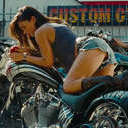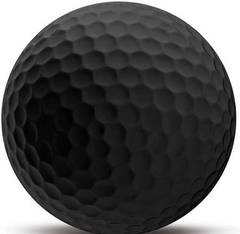
Heavy Minded
Member-
Posts
3 -
Joined
-
Last visited
About Heavy Minded

Personal Information
-
Your Location
Carmel Indiana
Your Golf Game
- Plays: Righty
Recent Profile Visitors
699 profile views
Heavy Minded's Achievements
-
This is a Cut and Paste URL, just like my last cut & paste post. (software matters) Thanks to the folks for the serious reply to my book postings. For the English majors: thanks for reminding me of the benefits of playing this game alone. Hope this was not too long for your ADD attention span.
-
The whole thing gets started with: Single Plane Swing, Full Extension at address, which is where you will be at impact - so start there; also the opportunity for Single Length irons, which would make it easier in establishing a consistent swing. Wishon says we are victims of Marketing (someone selling you Lighter is better, lower lofted clubs for faster swing) buying the mass produced clubs off the shelf. Yep - I agree! These clubs do not fit me; not worth the cost. My intent is not to increase my swing speed, or see how far I can Drive the ball off the tee. (Leave it in your pants; no one cares how long you are except maybe your lover.) I am in the game of Golf to play good. Accuracy trumps distance in my book. I watch all the Tell-a-vison crap Pro's driving great distances into the rough and trees. Just not fun for me to do that. You see they cut the grass much lower on the fairway so the second shot is easier. My PW is very heavy. Bryson's Single Irons are 280+grams head weight. I wanted to try a 6 iron heavy at 280grams. Can't get one. You can't skim read my first post and understand much. I have listened to interviews with Mo Norman several times. He states very clearly what he needed to do with his clubs. This helps a great deal. But the fitter can't help me (though Wishon tells me to go see one) because he has never heard of single plane, he has never built a heavy club head, and he can't purchase anything over 274grams. He is programmed somewhat like the mass produced manufacturers Wishon speaks out against. And it still comes back to my favorite club in the bag: a heavy PW X18R. It's short and heavy and I want to try this in the lower number irons. I'll build it myself and I will stop asking the so-called "experts" for help. If we stop comparing ourselves against others we can focus on our game. So what if your neighbor hits his 6i 200 yards. I'll pull out my 3 hybrid to get there. So What!!! My focus is accuracy. First target is the fairway on the way to the Green (short grass); then there is the Pin on the Green and that little hole. Targets require accuracy; "Left-Right-Left-Right" all the time is unacceptable to me. Lately I have noticed that one mass-produced club is going heavier - against the industry norm. Boccieri Golf seems to headed my way. RLW
-
Mass and Force If equal force is applied to two objects, the object with the lesser mass will have the greater resulting acceleration. Correspondingly, the object with a lesser mass will travel a greater distance over an allotted time interval. In order for two objects to travel the same distance, a greater force must be applied to the object with a greater mass. (From the Internet) This does not really speak to my interest. But when you research on a quick Internet search about greater mass striking an object, this is all you find. Maybe this is why it's hard to understand “mass” and ball striking. R.L. Welsh Should You Be Using A Heavier Golf Club? (Again, this is from the Internet) Golfers vary. If you give Davis Love III or Brad Faxon a club which is slightly heavier than what they are used to it will noticeably throw them off. Hulk Hogan or Arnold Schwarznegger will never notice the difference. The ball will just go farther. The nature of their muscle mass is what limits their top-end swing speed. Long, loose muscles generate the most speed. Large, bulky muscles generate the most torque. Fast ball pitchers and quarterbacks are never built like tight ends and linebackers. Wayne Gretsky is surprisingly scrawny and puny looking without his shirt on, yet he was able to shoot the hockey puck with great velocity. It’s a case of John Deere versus Kawasaki. The fastest motorcycle does a terrible job hauling a lot of weight and the strongest tractor is blown away by even a dinky, little motorcycle in the quarter-mile. If you add a second, two hundred pound rider to the back of the motorcycle you will drastically reduce its zero-to-sixty speed time. Adding the same weight to the tractor will have little or no impact on its rate of acceleration. A tall, scrawny runner might easily beat a stocky, muscular decathlete in a footrace until both men are given thirty-pound backpacks to wear during the race. How do we determine the optimum weight of a golf club? Well, we know that a hummingbird smashing into a golf ball at 100 miles per hour would, just before it died, cause the ball to fly only a very short distance. We also know that a massive locomotive smashing into a golf ball at 20 miles an hour would not cause the ball to go very far either. The optimum weight/speed combination rests somewhere in between. Anyone who has hit range balls with a weighted training club has experienced the same results: that ball just does not go very far regardless of how hard the golfer tries. Golf clubs can easily be made very light. That enables them to be swung at great speed, but to little avail if the weight falls below a certain amount. A lightweight, plastic, juvenile club does even more poorly than does the weighted, training club. Finding the optimum weight combination would be simple if all humans were the same size and weight and possessed the same strength and suppleness. An Iron Byron test machine or a physics professor could decide the issue in an hour or two. Unfortunately, we all vary a great deal and manufacturers are forced to go with a general average weighting pattern. There is no one precise formula. Don’t ever let anyone tell you differently. (I think this answers my question! RLW) Many, many women and seniors labor under the misassumption that ultra-light clubs will enable them to hit the ball farther. Generally, the opposite is true. They can get the club up more easily, but when it comes down to the ball it does not have enough oomph to send the ball flying. (this is my thought when I strike the ball with my Callaway X18R long irons; However, the PW is so heavy, greater mass, I notice how easy the swing and how far the ball travels with little effort. RLW) Some companies construct their ladies’ club heads so that they are actually heavier than the male counterparts. It is the golfer who can generate high club head speeds who generally benefits most from lower head weights. Golfers with slow swing speeds are the ones who benefit most from the added authority given by extra weight both overall weight and swing weight. Unfortunately, weak and elderly golfers often do not have the strength endurance to use the heavier clubs for a complete round. Strong, muscular golfers do have ample strength endurance, however. They are the ones who should experiment with added weight. They are the ones who should try heavier shafts, heavier heads and heavier grips. There are an infinite number of combinations. Adding a few extra grams to both head and grip might be the answer. (But we have to know how to do this properly; Hence go to the Fitter RLW) The Basics of MOI Matching Your Golf Clubs By Jeff Sheets With MOI matching we are attempting to place the ideal amount of resistance into the golfer’s hands that they can control the most consistently. (ie: Heavy head weight too! I have yet to have a fitter even mention this approach. RLW ) Too much resistance and he or she will struggle to accelerate the club through impact and/or have difficulty controlling it. With too little resistance the golfer may over-swing, cast the club, or simply lack the mass in the club head necessary to maximize distance. (Eureka!!!) The objective is to identify the optimum mass distribution for the golfer (head weight, length, shaft balance, etc.) and then replicate it into every club in the set. The Auditor MOI scale for complete clubs will assign a higher value to a club that has a greater resistance to swinging. In layman's terms, the lower the complete club’s MOI, the easier it will be to swing, and vice versa. Some club-fitters may realize that the same factors that influence a complete club's MOI are identical to the factors that influence swing weight. If you have made this determination, then you are correct. Making a club longer in length makes it more difficult to swing (increased MOI), but it also increases its swing weight. Making the head lighter in weight makes it easier to swing, while at the same time it reduces its MOI. The same exact factors that influence swing weight allow us to fine-tune the precise MOI target we seek in a completed club. My original question to Tom Wishon and suggested Local Fitter was: Is it so hard to make a 6iron 280grams club-head weight? Gentlemen, I have no criticism here for anyone. I am just trying to understand. I added the bold and underline for my emphasis to “mass” or “heavy club head.” This all seems very logical to me, even if engineers do not agree. My experience tells me my 60degree Sand Wedge takes a lot more swing than my PW with a heavy club head, to make the ball travel the same distance. This alone tells me to increase the club head weight in my longer irons to calm down my swing and send the ball a greater distance with a smooth easy swing, and a consistent strike in the 'sweet.' Maybe I should put a longer shaft on my 60 SW to see if I can go the same distance with the same easy swing as my heavy PW? I thought to ask you Makers & Builders these questions thinking perhaps it has already been tried; Or perhaps some scientific principle may prove it does or does not work. But no one has yet presented any information as to the outcome of my so-called the “theory.” In a fitting I am just pointed back towards modern conventional “theory” that the Top Ball Strikers on tour have supposedly proven: “Light is better, and longer for more speed.” (Tour players mean nothing to me and my game.) Again, desiring answers to these questions are why I would go to a Custom Club maker for help. But I am finding most makers are use to doing things a certain way; Mainly the way they have been brought up in the business, the way the current business model tells them, using the current technology which is focused on “lighter is better.” Hey, what the heck, you sell a great deal of clubs the way it is. Unfortunately this is only slightly different from “mass produced” clubs. You are still in the same camp as you can not add weight to the Club Head, nor do you think it is necessary. Food for thought: The person with no preconceived notions on how “things should be” will step out and experiment to see if there is a better way. If you would say “no” that will not work, and point to the “Pro's” and what is being mass produced does work; the truth is the public does not even know what the “Pro's” are truly playing; The public knows nothing about their clubs. So I guess I will head out to the shed and start melting lead and filling in the open cavity on the back side of my cavity backed irons. Can't hurt much. The real funny thing about all of this is that my 73 year old Aunt was telling me how she saw my Grandfather out in his work shed 40 some years ago, drilling on his irons in an attempt to add weight. I never knew this before. I guess the apple does not fall too far from the tree. He was not an avid golfer but I guess he had an idea of what might work better. Sincerely, R.L. Welsh





